Golang vs Python
Overview
In terms of scope, Python, and Golang can both be utilized in a variety of applications. Although, experts believe Python is significantly more adaptable than Golang. Golang is a language similar to Python that has a wide range of applications. In this article, we will look at a detailed comparison of these two languages.
Before you get around to comparing Golang vs. Python, go through a brief introduction to both these languages.
What is Golang?
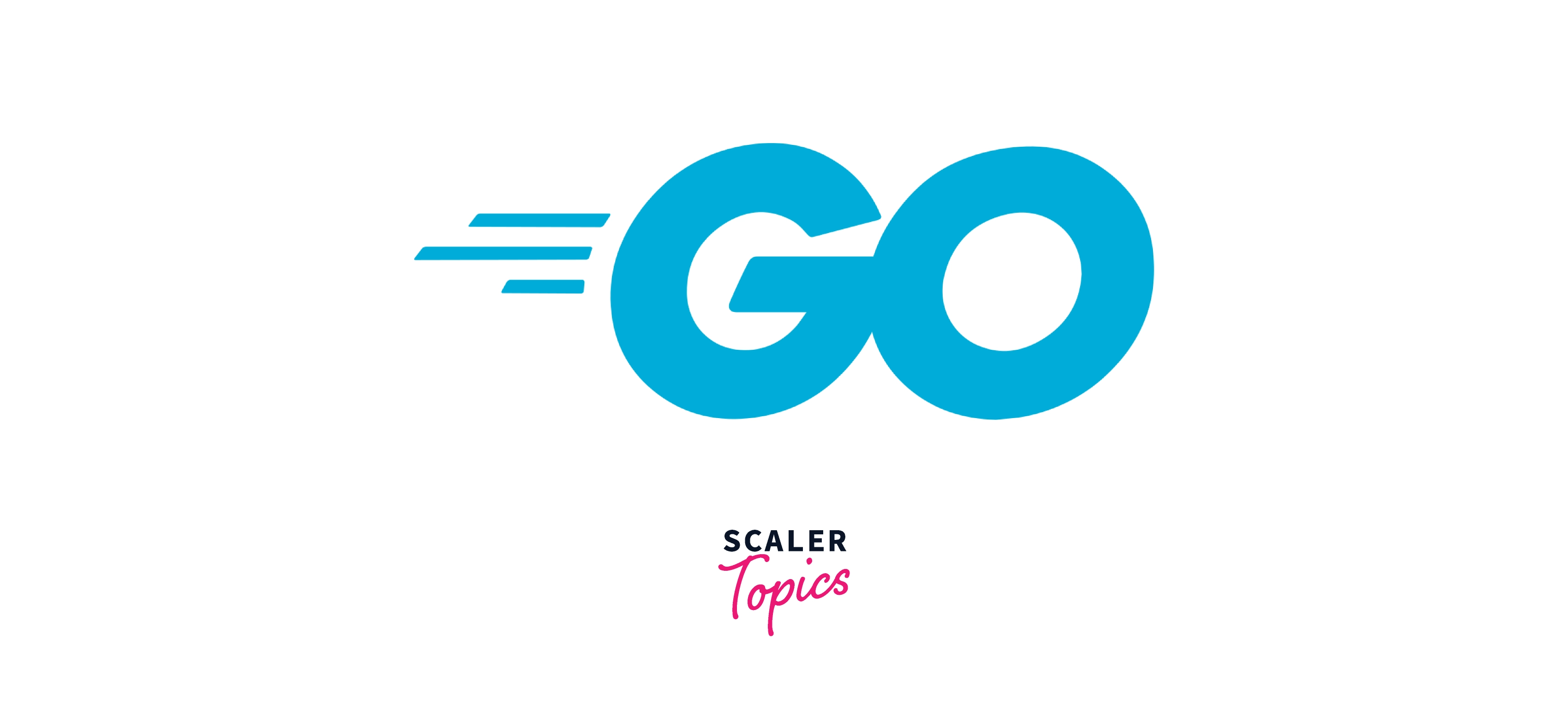
Google Go, often known as Golang, is an open-source, compiled, and statically typed programming language.
Go is a free and open-source programming language that emphasizes simplicity, dependability, and efficiency.
It was developed by google developers to solve large and complex codebase which was gradually slowing down at that time. As a result, they concluded that they needed a new programming language that was centered on simplicity and speed. Go was created by Robert Griesemer, Rob Pike, and Ken Thompson.
Here are Important Features of Golang:
- Go provides excellent concurrency primitives and makes implementing a concurrent system simple.
- Go is a basic language that was developed with a minimalistic approach.
- The speed of compilation and execution is far superior to that of several well-known programming languages such as Python, Java, and others.
- Great libraries.
- Easy and generic code.
It can be used for:
- Distributed `Network Services
- Cloud-Native Development
- Utilities and Stand-Alone Tools
What is Python?
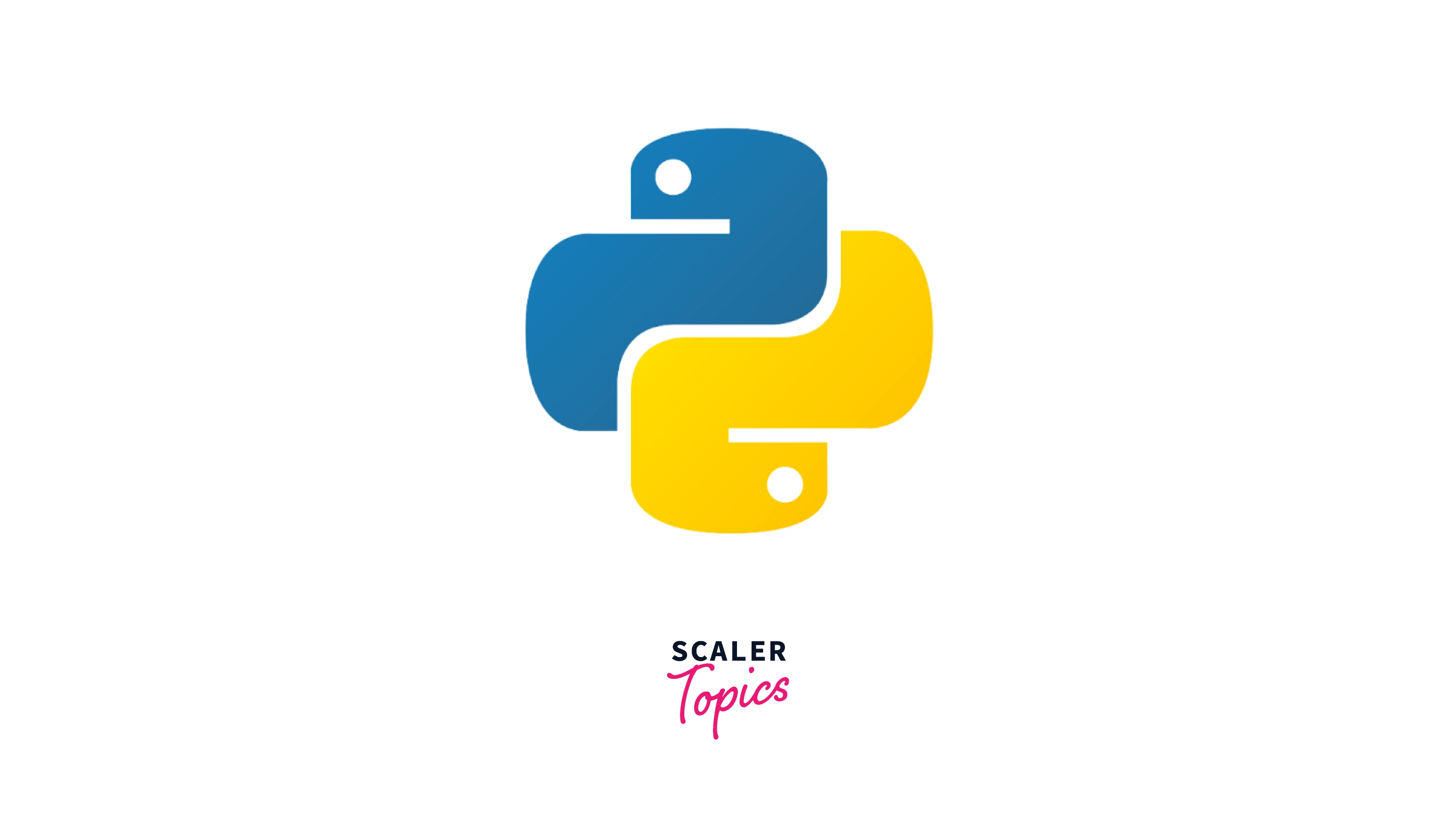
Python is a high-level scripting language, interpreted, interactive, and object-oriented with dynamic semantics developed by Guido van Rossum. Python is intended to be extremely readable. It commonly uses English terms rather than punctuation, and it has fewer syntactical structures than other languages.
Here are Important Features of Python:
- Compatible with a wide range of operating systems, including Windows, Mac, Linux, Raspberry Pi`, and others.
- Python uses a basic syntax similar to English, allowing developers to utilize fewer lines than in other programming languages.
- It uses an interpreter system that allows code to be performed quickly, which speeds up development.
It can be used for:
- Test frameworks
- Multimedia
- Scientific computing
- Text processing
- Machine Learning
- GUI Applications (including Kivy, PyQt Tkinter, etc. )
Golang vs Python Parameters for Comparison
Scalability
Go is created to provide scalability to the applications deliver to the company's needs. That's why Golang was developed with inbuilt support for concurrent process channeling, i.e., concurrency. On the other hand, Python does not provide concurrency, but it does support parallelism via threads.
Concurrency and Parallelism
When an application is concurrent, it means that it performs multiple tasks at once, but only one is visible at a time, while the others are running in the background. The application may not work on multiple tasks at once if the computer only has one CPU, but multiple tasks are processed by the application itself.
When an application is parallelized, its tasks are broken down into smaller ones that can be handled concurrently on several CPUs in parallel.
Code Execution:
Go is a statically typed language, variable types are declared explicitly for the compiler so that even trivial bugs are caught easily.
Whereas Python is a dynamic language and due to this interpreter using type inference in a dynamically typed language, some defects may exist because the interpreter interprets something inaccurately.
This indicates that the programmer has limitations when using Python, as it is a dynamically typed language and Go is capable of running both kinds of programs simultaneously.
Libraries and Frameworks:
The extensive selection of libraries and frameworks that are available is one of Python's main benefits. Two of the most well-liked web frameworks that make it easy to launch a web application as soon as feasible are Django and Flask. Python also enables for quick prototyping and has a wealth of libraries in particular areas like data science, artificial intelligence, data security, and forensics. Python-supported libraries:
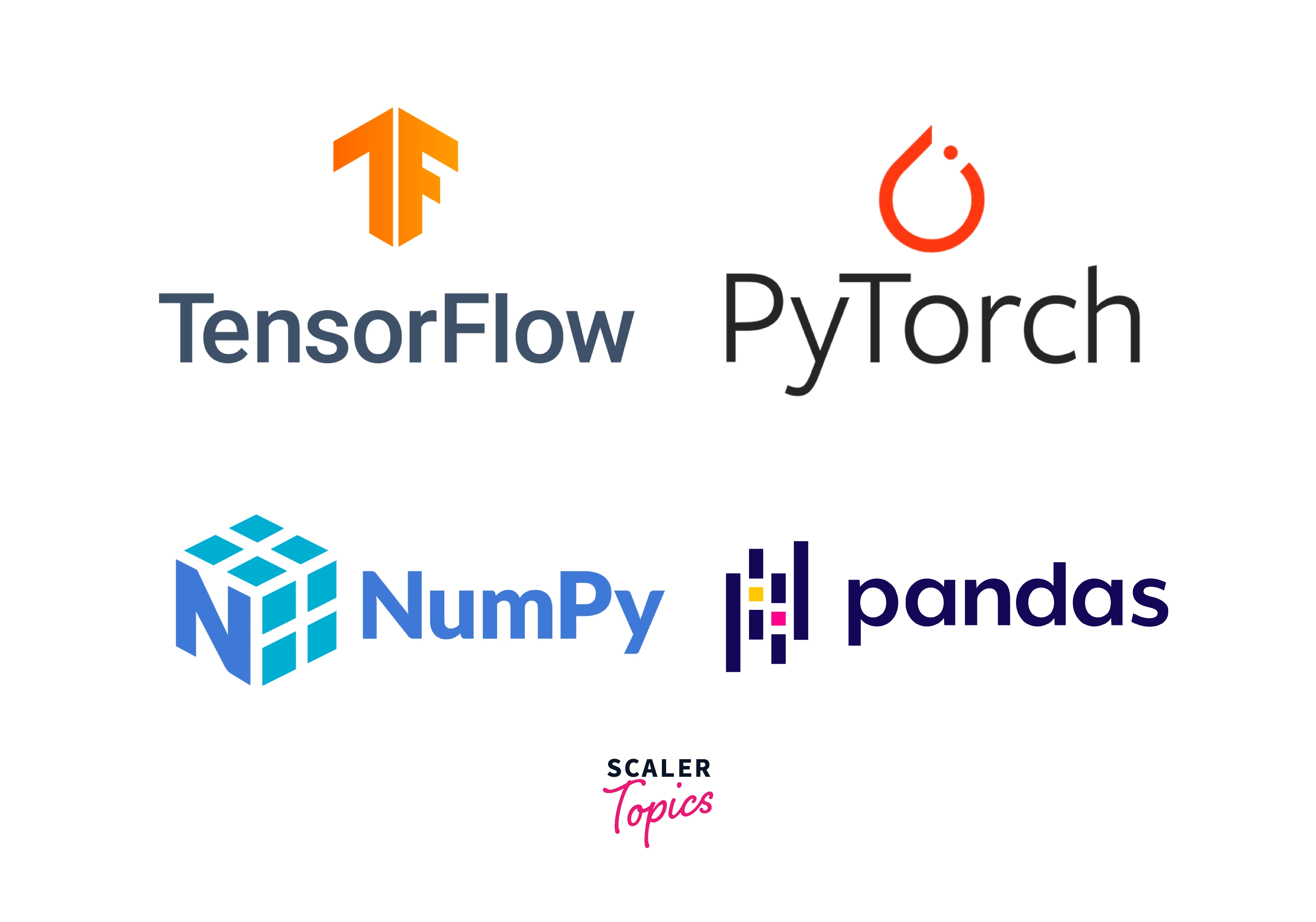
While Go does have some library support, it is scattered and far from being as comprehensive or developed as Python. Additionally, you'll observe that there isn't a single dominant framework, like Django for Python. Many developers in the Go community argue that you shouldn't use a framework at all. This suggests that the Go community is almost anti-frameworks. Using a framework will often greatly speed up the development process, saving both time and money. Go supported libraries:
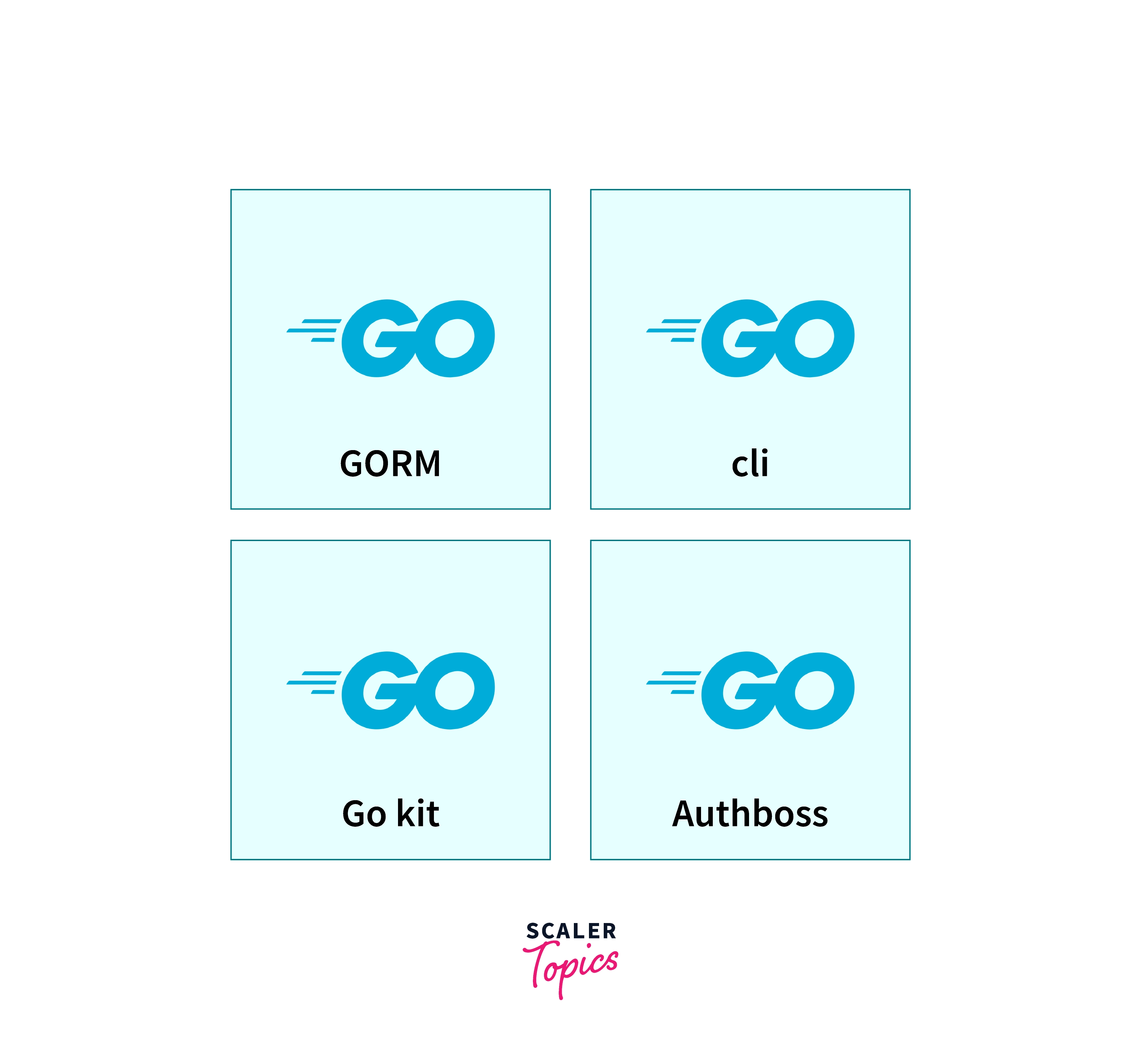
Performance:
Go is quick—there is no denying that—and as Go is a compiled language, it will always be quicker than an interpreted language like Python. However, Python is generally regarded as "quick enough" and you are unlikely to run into performance problems until a project reaches a sizeable scale if speed is not the project's top priority. Golang is 30 times faster than Python.
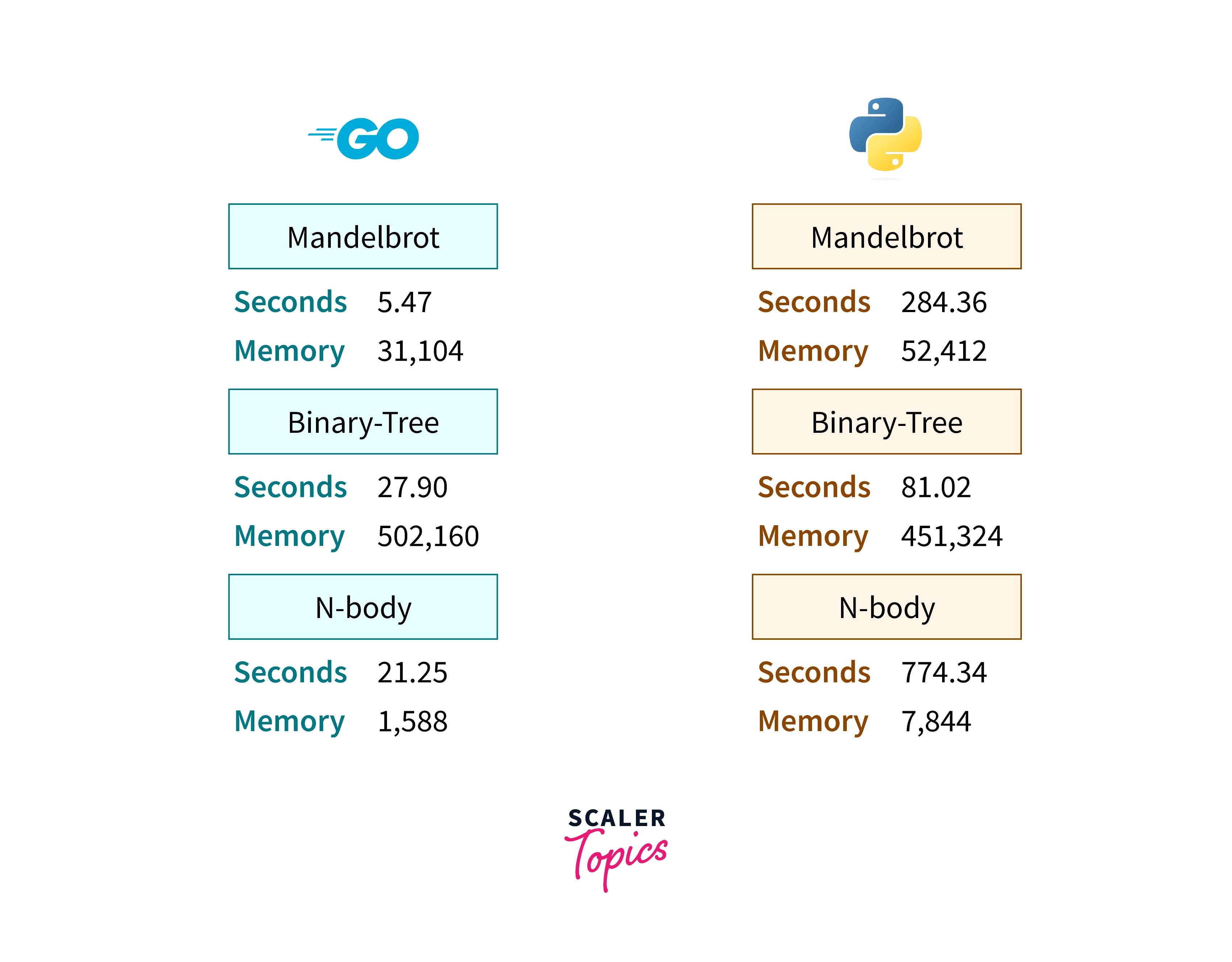
Key Differences
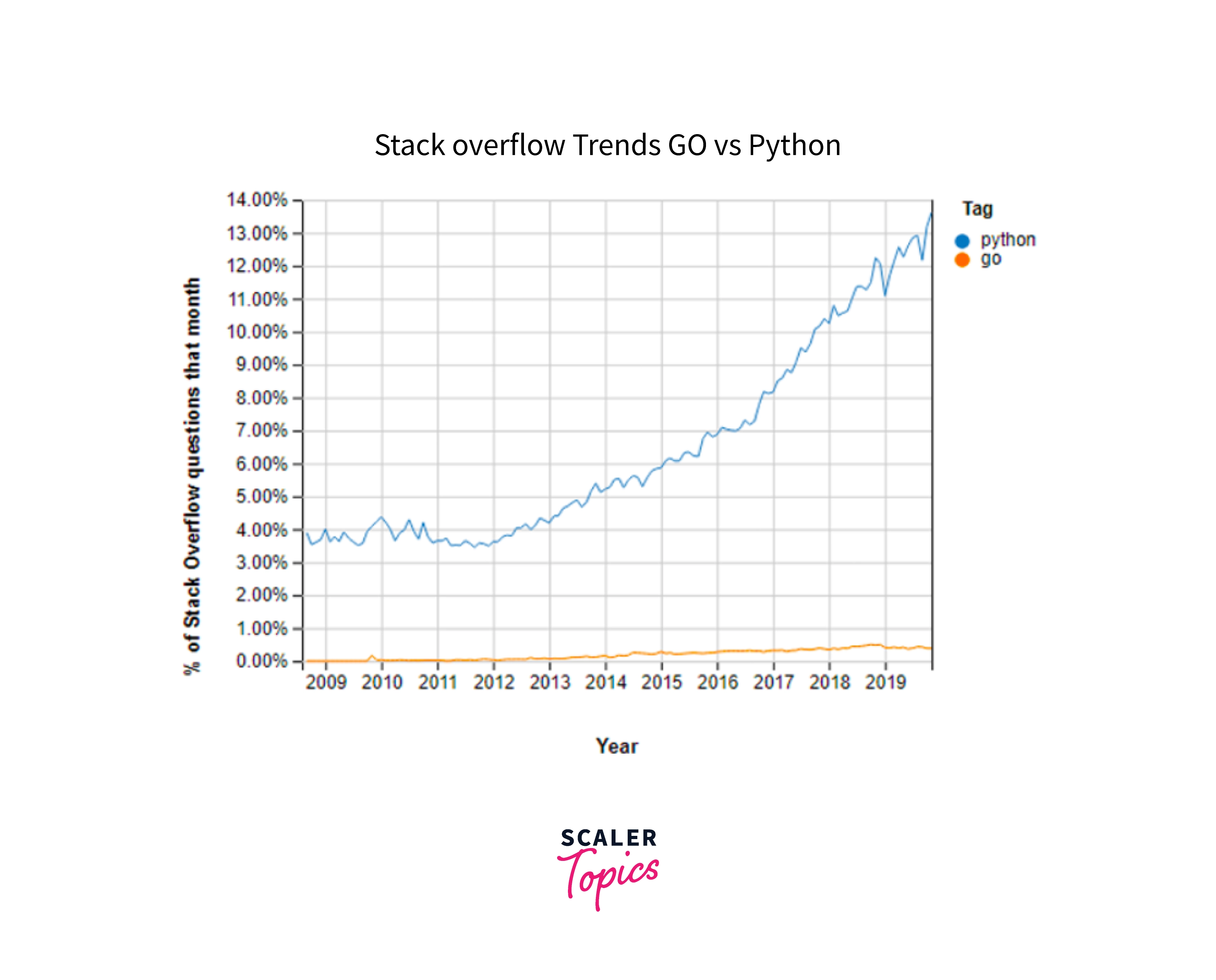
- Go supports concurrency, however, Python lacks an in-built concurrency mechanism.
- Go does not support inheritance, unlike Python.
- Go is best suited for system programming, whereas Python is a popular language for handling data science challenges.
- Python is an object-oriented, imperative, functional, and procedural language, whereas Go is a procedural, functional, and concurrent language.
- Exceptions are not supported in Golang, although they are in Python programming language.
Golang Vs Python
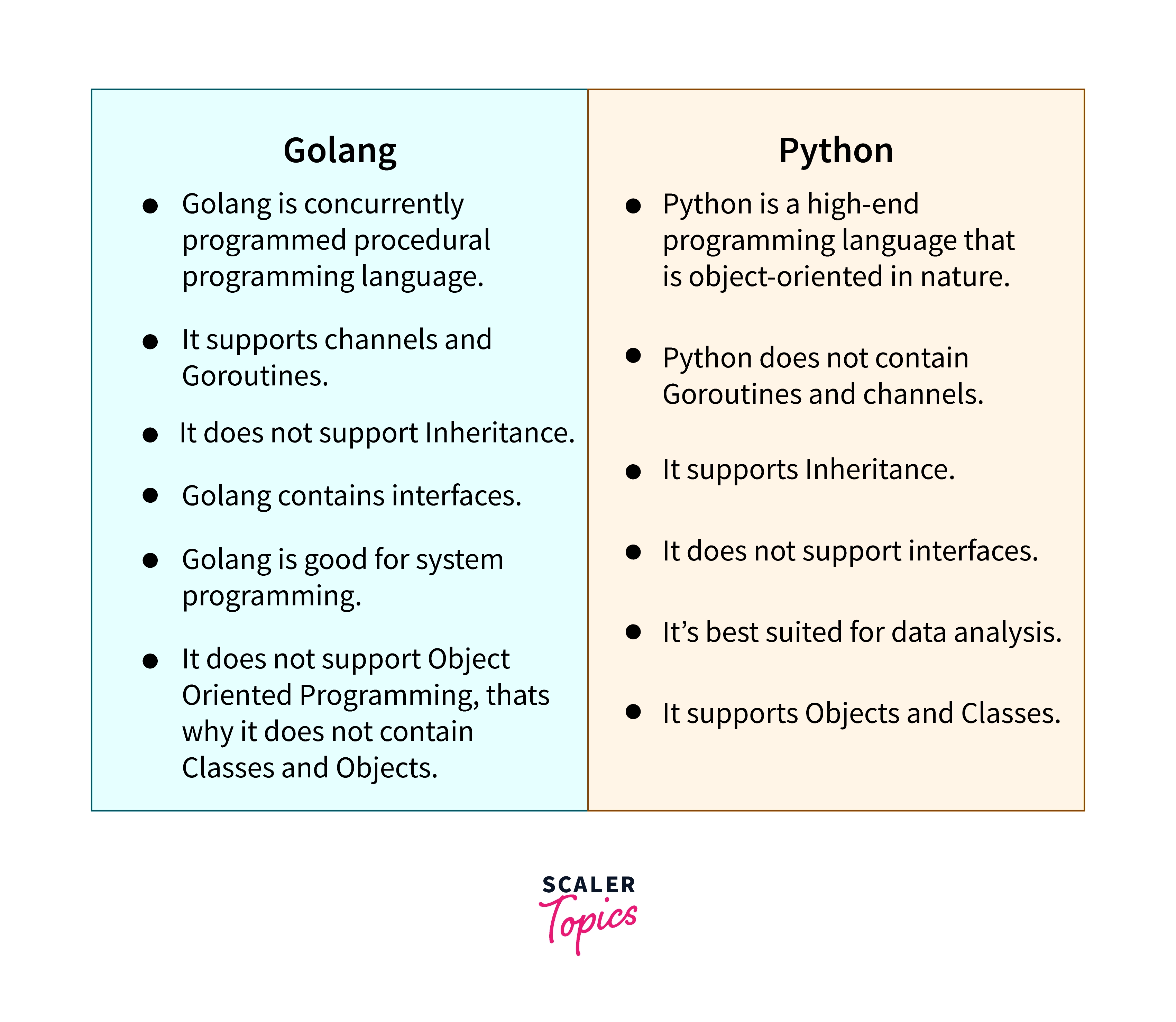
Golang Vs Python For Web Development
Golang has tremendous features, including security, which helps to prevent hackers, and this is also very important in web development, especially for businesses that handle sensitive data.
Benefits of using golang for web development:
- Single Binary File: Depending on the OS type and architecture, compiles into a single binary file. Using static linking, Go combines all dependency libraries and modules into one and combines all dependency libraries and modules into one single binary file.
- Static type system: This indicates that it is more suitable for large applications.
Some Golang Frameworks for web development:Buffalo, Gorilla, Gin, etc.
On the other hand, Python is very popular for building web applications. We can use Python in different ways, for example, for server-side web apps, RESTful web APIs, etc. It supports multiple libraries and provides the main focus on building the application, along with a very simple and easy syntax, it can be learned by anyone.
It also provides multiple web frameworks to make web applications such as Django, Flask, Pyramid, Web2py and Bottle, Grok, etc.
Benefits of using Python for web development:
- Server-side scripting: Python is very useful for the backend of server-side scripting.
- Scalable: Python includes libraries like plethora that can help you scale your project quickly. Web-scrape: Python was the most popular choice among developers for data scraping.
- Integration: Python can be combined with other languages such as Java or Ruby, which is a common requirement when developing web applications.
Golang Vs Python for Machine Learning
Earlier we only use Python for machine learning but now Golang can also be used for the same.
Let's talk about separately why and when you should choose Go or Python for `machine learning,
Why Use Python for Machine Learning?
-
Tremendous Library support: Python supports a huge number of libraries, specifically for AI and ML, for example,
- NumPy library for multi-dimensional arrays, matrices, and advanced mathematical functions.
- Machine learning libraries include Keras, TensorFlow, PyTorch, and Scikit-learn.
- Pandas for data analysis purposes.
- Data visualisation with Seaborn and Matplotlib(used for creating static, animated, and interactive visualizations.)
-
Easy To Learn: Python is a very friendly language that the human mind can understand very easily. Furthermore, because it is a general-purpose language, it can be used for a variety of machine-learning tasks, and developers can use it to create prototypes for testing their AI products.
Apart from this, it has a very vast community to help you out wherever you find yourself stuck.
Why Use Golang for Machine Learning?
- Concurrency: Go supports concurrency with the help of goroutines that help a lot to be faster than any programming languages, it saves costs and resources.
- Compilation Capabilities: Golang is a compiled language that produces a single library. It is a statically typed language that combines all of its dependencies into a single binary file. Developers do not need to install dependencies on the server in this case.
- Clear Syntax: The Go language has a strict syntax, which makes it simple and intuitive. No extraneous components are limiting the developers' progress on the structure. Instead, progress becomes more straightforward and clear.
Benefits of using Golang over Python:
- Readability: For its AI and ML algorithms, it takes a simple approach. Because of this minimalistic approach, Go engineers produce relatively understandable code after development.
- AI Libraries: As Golang does not require any external libraries, everything is written in the core. It offers fewer libraries, but those libraries cover a wide range of functionalities. The GoLearn package handles data; Hector handles binary classification tasks; Theano is similar to TensorFlow; and Goml is used for data passing.
Which is Better?
- Considering the simplicity and concurrency of the pages. Go is typically 30 times faster than Python.
- Go makes an effort to keep things simple. It does not introduce many new ideas. The goal is to create a simple language that is extremely fast and simple to use. Goroutines and channels are the only areas where it becomes creative. Go routines are Go's lightweight threading mechanism, and channels are the preferred method of communication between goroutines.
- Goroutines are incredibly inexpensive to generate and just require a few KBs of extra RAM. Because Goroutines are so light, a large number of them can run at the same time. Channels are used to communicate among goroutines. The Go runtime takes care of everything.
- The goroutines and channel-based concurrency method make it very simple to employ all available CPU cores and manage concurrent IO without complicated programming. Unlike Python/Java, running a function on a goroutine needs very little boilerplate code.
Conclusion
- In conclusion, we saw the difference between golang vs python based on the programmer's expertise and ability to understand real-world demand, both Python and Golang offer their own set of advantages. Both Python and Golang have extremely clean syntax, which significantly reduces the developer's workload.
- The choice of the right coding language can make the difference between software that works well and one that requires a lot of upkeep.
- Golang is the best option if speed and scalability are your main concerns while creating a tool. Golang is a relatively user-friendly language that can replace manual memory management while yet operating at speeds that are comparable to C/C++.
- However, Python may be your best choice if you want to produce tools and scripts that work well across teams and are easy to read. Even developers without prior Python experience can easily understand the language because it reads like everyday English.
